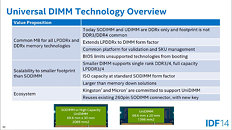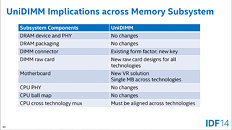
How Intel Plans to Transition Between DDR3 and DDR4 for the Mainstream
The transition between DDR2 and DDR3 system memory types was slower than the one between DDR and DDR2. DDR3 made its mainstream debut with Intel's X38 and P35 Express platforms, at a time when the memory controller was still within the domain of a motherboard chipset, at least in Intel's case. The P35 supported both DDR2 and DDR3 memory types, and motherboard manufacturers made high-end products based on each of the two memory types, with some even supporting both.
Higher module prices posed a real, and higher latencies, posed a less real set of drawbacks to the initial adoption of DDR3. Those, coupled with the limited system bus bandwidth, to take advantage of DDR3. DDR3 only really took off with Nehalem, Intel's first processor with an integrated memory controller (IMC). An IMC, again in Intel's case, meant that the CPU came with memory I/O pins, and could only support one memory type - DDR3. Since then, DDR3 proliferated to the mainstream. Will the story repeat itself during the transition between DDR3 and the new DDR4 memory introduced alongside Intel's Core i7 "Haswell-E" HEDT platform? Not exactly.
Higher module prices posed a real, and higher latencies, posed a less real set of drawbacks to the initial adoption of DDR3. Those, coupled with the limited system bus bandwidth, to take advantage of DDR3. DDR3 only really took off with Nehalem, Intel's first processor with an integrated memory controller (IMC). An IMC, again in Intel's case, meant that the CPU came with memory I/O pins, and could only support one memory type - DDR3. Since then, DDR3 proliferated to the mainstream. Will the story repeat itself during the transition between DDR3 and the new DDR4 memory introduced alongside Intel's Core i7 "Haswell-E" HEDT platform? Not exactly.



